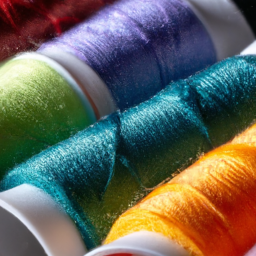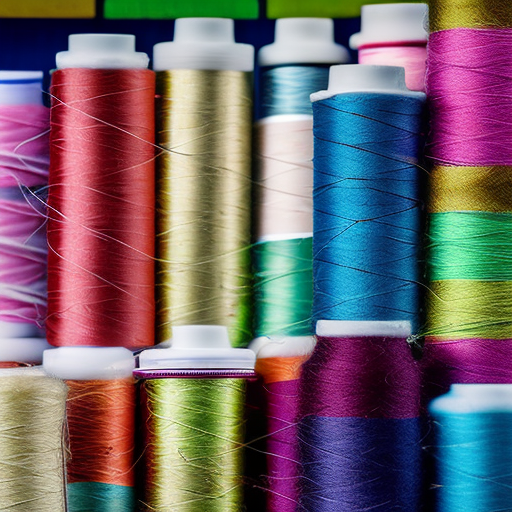
Introduction
Sewing threads are an essential component in the sewing process, serving as the backbone for creating sturdy and durable garments, accessories, and textiles. The sewing thread rate refers to the measure of thread used per inch or centimeter of stitching when completing sewing projects. It plays a vital role in determining the quality, strength, and longevity of the sewn items.
Factors Affecting
Several factors influence the sewing thread rate:
- Fabric Type: Different fabrics require varying amounts of sewing thread. Lightweight fabrics like silk or chiffon need less thread, while heavyweight fabrics such as denim or upholstery fabric require more thread.
- Stitch Type: The type of stitch chosen affects thread usage. Simple straight stitches consume less thread than complex stitches like zigzag or decorative stitches, which require more thread.
- Seam Length: Longer seams will naturally consume more thread than shorter ones.
- Thread Thickness: Thicker threads require more space between each stitch, resulting in increased thread consumption.
Calculating the
Knowing the sewing thread rate is useful for estimating the required amount of thread. Here’s a simple formula to calculate it:
= Total Thread Used / Seam Length
Importance of Choosing the Right
Selecting an appropriate sewing thread rate is crucial for achieving professional-looking results and ensuring the longevity of the stitched items. An inadequate thread rate may lead to several undesirable outcomes:
- Puckering: Using too much thread can cause puckering, where the fabric wrinkles between stitches, giving an unattractive appearance.
- Insufficient Strength: Insufficient thread may result in weak seams that can easily unravel or break, especially if the item is subjected to stress or frequent use.
- Wasted Thread: Using excessive thread can be wasteful and increase the project’s overall cost. It is important to strike a balance between strength and economy when determining the thread rate.
Optimizing
To optimize the sewing thread rate:
- Choose the appropriate stitch type and length for the fabric and project requirements. Avoid unnecessarily complex stitches.
- Select a thread thickness suitable for the fabric type to avoid excessive thread consumption and thread breakage.
- Regularly test and adjust the thread tension to achieve balanced stitches and prevent overuse of thread.
- Practice proper seam allowance to ensure efficient thread usage and minimize wastage.
Conclusion
The sewing thread rate is a critical aspect of any sewing project, impacting the final appearance, strength, and cost of the stitched items. Understanding the factors affecting the thread rate and optimizing it for each project’s specific requirements can lead to high-quality, durable, and visually appealing garments and textiles.





Great info for an beginner!
Gianna Amir: Very helpful!
Excellent advice! Finding the right thread is crucial for quality sewing projects.
Agreed! The right thread can really make a noticeable difference in the outcome.